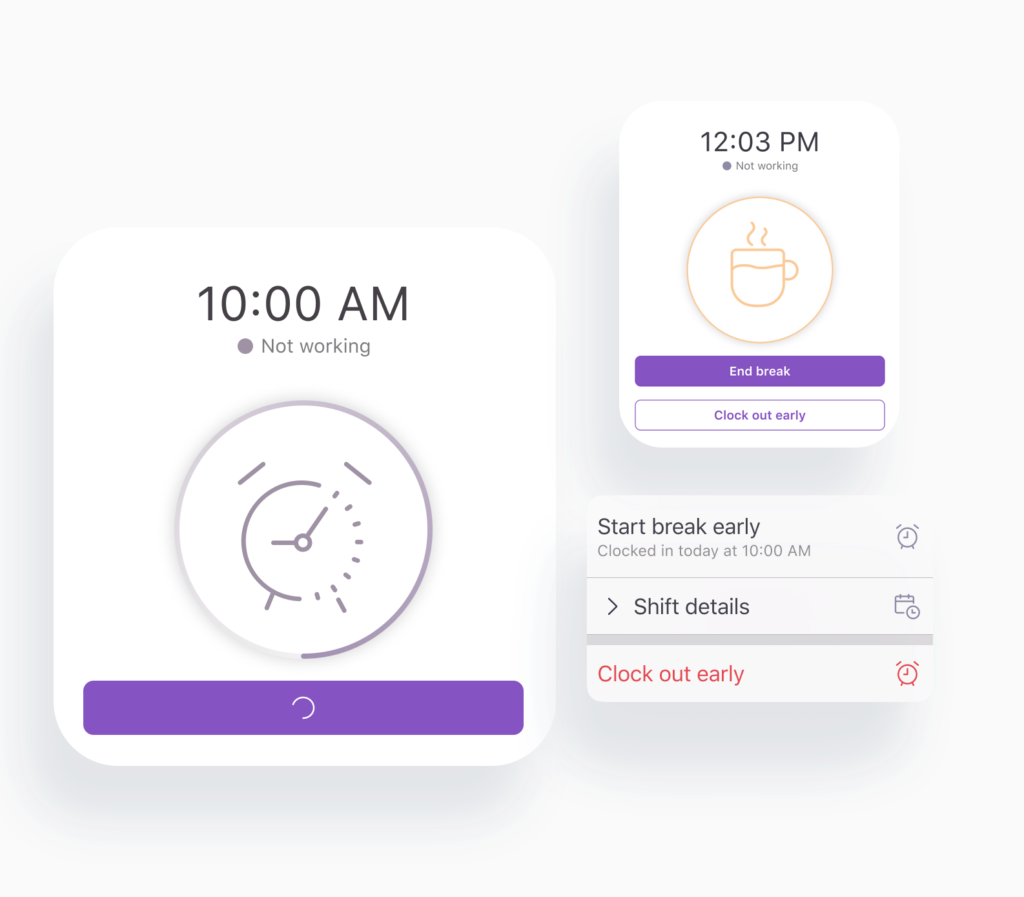I improved the design of the punch clock feature to guide users seamlessly to their next punch, enhancing accuracy and reducing errors in time tracking.

Lead product designer
UX Researcher, Content designer
Web, iOS, Android
A significant bottleneck was identified in the timecard feature that was not included in the MVP release. The time-consuming nature of adding missed punches one at a time on the user’s timecard imposes unnecessary burdens on users. Such inefficiencies not only drain valuable time and resources but also undermine the platform’s role as a streamlined communication and collaboration tool for frontline workplaces.
This approach to timecard editing hampers productivity, hindering organizations reliant on WorkJam from effectively managing their workforce operations. Urgent attention is needed to overhaul this process, providing users with a more efficient and user-friendly means of making bulk edits across the platform’s global user base.
Through user interviews, a previously unidentified persona has emerged within our user base – office workers at Apple. Contrary to our initial assumptions, these office workers heavily rely on the timecard feature to submit their working hours, a task typically done through automatic punch clock recordings.
One striking finding is their tendency to delay timecard submissions until the final days of the pay period, resulting in accumulations of up to a month’s worth of entries. This behaviour presents a significant challenge, as users are burdened with the arduous task of manually inputting numerous time entries, creating inefficiencies and potential inaccuracies within the system.
Understanding this user behaviour sheds light on the critical need to streamline the timecard entry process, particularly for users with bulk entries, to enhance user experience and ensure accurate recording of working hours.
Sandy Lumin, Cashier
In our brainstorming sessions, we really wanted to tackle the pain points head-on. We gathered around the table, armed with sticky notes and coffee, ready to dive into the nitty-gritty of our users’ experiences. We listened intently to feedback, noting every frustration and every suggestion for improvement. It was all about understanding the real issues our users were facing and finding innovative ways to address them.
As we tossed around ideas, there was this sense of excitement in the air. We knew we wanted to streamline the editing process, but we also wanted to make sure it was intuitive and user-friendly. We scribbled down sketches, debated over features, and tossed out ideas that just didn’t make the cut. It was a collaborative effort, with everyone bringing their unique perspectives to the table.
We landed on a solution that we believed would be intuitive for the user. It was all about simplifying the entire experience.
The primary goal of the project was to empower employees and managers, enabling them not only to view but also to edit and approve their timecards and to do so in a timely manner.
However, achieving this seemingly straightforward objective posed numerous complex challenges, primarily stemming from Apple’s distinctive time and attendance processes, requirements. Numerous complex challenges, primarily stemming from Apple’s distin,
Through user research and interviews, several key insights have come to light regarding the utilization of the timecard feature, particularly among office workers at Apple. One significant learning is the unexpected reliance of these users on the timecard feature, despite their non-utilization of traditional punch clock recordings. Instead, they heavily depend on the feature for submitting their working hours, often leading to the accumulation of a month’s worth of entries.
This behavior underscores the importance of considering diverse user personas and their distinct usage patterns within our platform. Additionally, it highlights the critical need for a streamlined solution that caters to the specific challenges faced by this demographic, while still maintaining flexibility to accommodate the needs of all users across our user base.
These learnings serve as valuable insights for informing the development of future iterations of the timecard feature, ensuring that it remains inclusive, user-friendly, and efficient for all users, regardless of their role or organization.